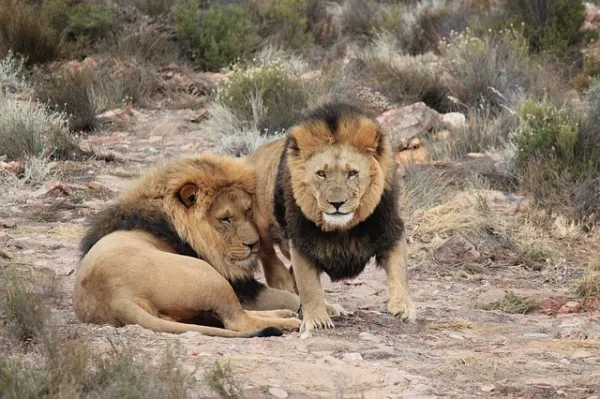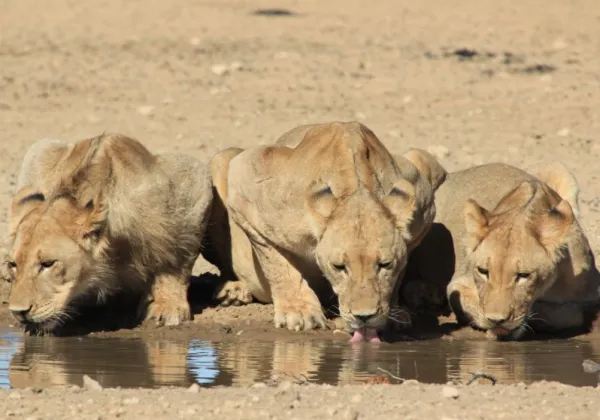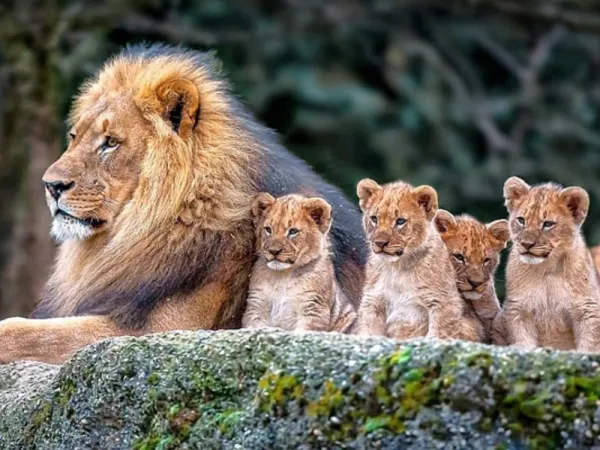Historically, lions roamed across vast territories spanning Africa, Europe, the Middle East, and parts of South Asia. However, due to growing human pressure, their populations have plummeted by over 30% in recent decades, and their historical range has shrunk by nearly 80%.
So, are African lions really going extinct? How many lions are left in the wild today? In this article, we’ll answer these questions and more—exploring the current conservation status of lions, the threats they face, and the global efforts underway to protect this iconic species.

Today, wild lions are only found in two regions of the world: Africa and India. However, both populations are facing serious declines:
Asiatic lions (Panthera leo persica): Fewer than 300 individuals remain in the wild, all confined to the Gir Forest National Park in Gujarat, India.
African lions (Panthera leo leo): Once widespread across the continent, their numbers have halved over the last 25 years. Lions are now found in 26 African countries, but only 7 of these (Botswana, Ethiopia, Kenya, South Africa, Tanzania, Zambia, and Zimbabwe) have populations exceeding 1,000 individuals.
While both African and Asiatic lions are declining, they receive different levels of protection:
According to the International Union for Conservation of Nature (IUCN):
Asiatic lion is listed as Endangered and included in Appendix I of the Convention on Migratory Species (CMS), which grants it the highest protection.
African lion is currently classified as Vulnerable and included in Appendix II of the CMS.
Some taxonomic classifications go further, recognizing multiple African lion subspecies (Hass et al., 2005), including:
Panthera leo bleyenberghi – Katanga lion
Panthera leo azandica – Congo lion
Panthera leo krugeri – Transvaal lion (includes white lions)
Panthera leo nubica – Nubian lion
Panthera leo senegalensis – West African lion
Despite taxonomic debates, most conservationists agree that African lion numbers may be overestimated, due to outdated or inaccurate counting methods. Many scientists and organizations are now pushing for African lions to be moved to Appendix I, which would grant them stronger international protection.
Asiatic lions: Critically endangered, highly protected.
African lions: Vulnerable, but at increasing risk of extinction if protections are not strengthened.

Human activities are the primary threat to the survival of lions. Major challenges include:
As human populations grow, more land is used for farming, livestock, and settlements—destroying or dividing lion habitats. Deforestation and overharvesting of wood further degrade their environment.
Lions are targeted for:
Bushmeat (wild animal meat trade)
Bones, skins, and cubs for traditional medicine or exotic pet markets
Trophy hunting, which remains legal in some African countries
When lions attack livestock or are seen as a threat, they are often killed in retaliation by local communities.
War and instability in certain regions destroy natural habitats and increase illegal activities such as poaching.
Outbreaks like canine distemper virus (CDV) can rapidly devastate entire lion populations.
Overhunting and habitat degradation have reduced the availability of wild prey such as antelope and zebra, making it harder for lions to survive.
Lions also suffer from:
Forest fires
Exposure to chemical pollutants and waste
Drowning in uncovered or poorly constructed water wells

Saving lions requires a holistic and community-based approach. Experts agree that coexistence between humans and lions is possible, but only with the right strategies in place:
Educating communities about:
The dangers and consequences of poaching
How to prevent illegal wildlife trade
Why protecting endangered species is vital to ecological balance
This includes:
Establishing buffer zones and safe wildlife corridors
Helping farmers adopt non-lethal livestock protection methods
Well-managed zoos can foster public appreciation and awareness of lion conservation, especially when used for education and breeding programs—not entertainment.
If this article sparked your interest, explore more wildlife content:
[What Animals Live in the African Savanna?]
[Endangered Animals in Africa]
[Endangered Animals in Asia]
Conclusion:
While Asiatic lions are already teetering on the brink of extinction, African lions are not far behind. If we don’t act now—through education, stronger policies, and global cooperation—future generations may only know lions as creatures of myth and history.
animal tags: lions
We created this article in conjunction with AI technology, then made sure it was fact-checked and edited by a Animals Top editor.